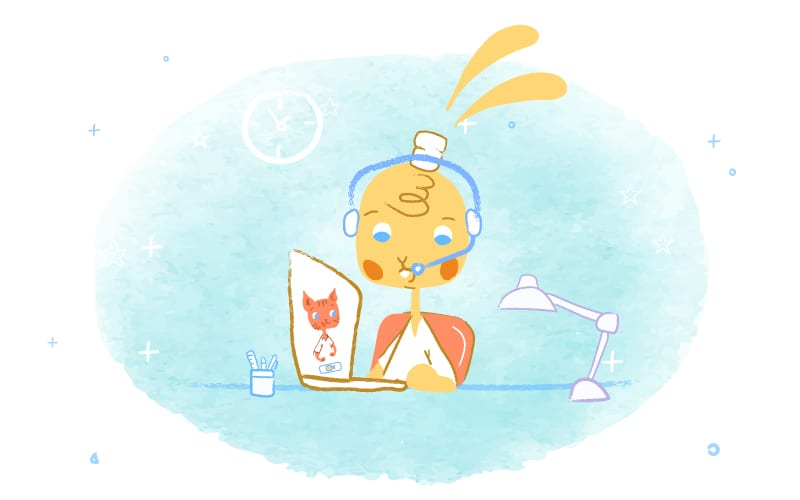

It’s no secret that meetings are crucial to the modern workplace. After all, they often serve as a place to collaborate, make decisions, and communicate. However, even with good intentions, too long or poorly run meetings can harm more than help. As such, if you want to keep a productive and healthy work environment, you need to recognize the signs that indicate you may be holding too many meetings.
With that in mind, this blog post explores the common symptoms of excessive meetings. We will also discuss the impact of meetings on employees and offer practical strategies for improving your meeting schedule.
1. The Hidden Cost of Overloaded Calendars
One of the most obvious signs that your organization is overrun with meetings is? Overloaded calendars.
If meetings dominate your calendar, they can significantly impact your productivity. You will need more time to work deeply, solve problems, or develop creative ideas if you’re constantly attending meetings. Furthermore, when employees require uninterrupted time to complete important tasks, constant meetings can disrupt this flow.
Additionally, back-to-back meetings can result in employees constantly shifting their focus, which leads to context switching. In addition to reducing productivity, energy, and creativity, frequent context-switching negatively impacts the quality of work. Additionally, context switches reduce cognitive capacity by 20%.
2. Meeting Fatigue: A Productivity Killer
Over time, employees experience “meeting fatigue,” or mental and emotional exhaustion. The reason? Having to attend meeting after meeting, especially those without a clear goal, drains people’s energy.
Symptoms of meeting fatigue include reduced focus, decreased productivity, and a sense of burnout. Also, employees may feel that their time would be better spent elsewhere, resulting in disengagement. Occasionally, meeting fatigue may result in higher turnover rates as employees seek environments where their time is valued.
3. Lack of Focus and Productivity Outside of Meetings
Unless meetings are properly organized, employees may struggle to focus on their tasks — even when they aren’t in meetings. The reason for this is that unproductive meetings drain employees of their energy and cause them to become distracted. Again, thanks to context switching, it is difficult to get back into the flow of work.
In fact, the average professional attends 25.6 meetings per week. Due to this, they switch contexts 5.1 times per day.
4. Overlapping or Redundant Meetings: A Major Waste of Time
Having to attend multiple meetings that cover the same topics can be one of the most frustrating aspects of corporate culture. As such, when you have overlapping or redundant meetings, your organization is holding too many meetings. In addition to wasting time, this creates confusion and inefficiency, since people have to rehash the same information or make the same decisions over and over again.
Regularly reviewing your meeting schedule will help you identify any overlapping or redundant meetings and consolidate them as necessary.
5. Meetings Without Clear Objectives and Outcomes
Meetings are also often plagued by a lack of clear objectives and outcomes. A meeting that lacks a clear agenda often meanders without a real conclusion or action items. In addition to frustrating attendees, this lack of direction contributes to the feeling that meetings are ineffective.
Furthermore, 72% of professionals believe clear objectives make meetings successful.
To set a clear agenda for meetings, you can do the following:
- Define the goal. Establish the meeting’s purpose or goal before scheduling it.
- Create an agenda. Prepare a detailed agenda highlighting the specific topics and outcomes you intend to discuss.
- Communicate expectations. Ensure that everyone knows what is expected of them by sharing the agenda in advance.
6. Analysis Paralysis from Excessive Decision-Making
Although meetings are valuable for decision-making, there is such a thing as too much decision-making. A culture that requires every minor decision to be discussed in a meeting can lead to “analysis paralysis,” in which people spend more time discussing small issues than actually carrying out tasks. As a result, projects can be delayed and employees feel irritated because their time is being wasted on unproductive decisions.
You can avoid this by allowing employees to make their own decisions, especially on routine or low-impact matters. You should also limit the amount of time you spend on certain topics to avoid getting sucked into unnecessary debates.
7. Long Meetings: The Enemy of Engagement
In many cases, the length of a meeting indicates its effectiveness. For example, if your meetings consistently run longer than they should, you’re not managing them well. In addition to being mentally and physically exhausting, long meetings rarely result in better results.
In the end, no meeting should last more than 30 minutes. That idea is supported by many experts, such as Donna McGeorge, the author of The 25 Minute Meeting: Half the Time, Double the Impact. Meetings, she argues, should be “short, sharp, and productive”.
8. Too Many Attendees: A Recipe for Chaos
Having too many people in the room is another sign of too many meetings. When a meeting has too many participants, it can become chaotic, with multiple voices competing for attention. The result is not only a lack of accountability but also difficulty staying on topic.
According to research, a meeting of three to eight people is ideal. But, to limit attendance you might try the following;
- Identify the key stakeholders. Limit attendance to those who need to be included in the discussion.
- Make use of subcommittees. For more in-depth discussions on specific topics, consider forming subcommittees or working groups.
- Use technology to your advantage. Allow remote participants to join the meeting through technology, such as video conferencing or Slack chats.
9. Missed Deadlines and Poor Work Quality
If your team consistently misses deadlines or produces lower-quality work, it may be due to too much time spent in meetings. The reason is that unproductive meetings pull employees away from their core tasks. In turn, this can lead to stress and overwhelm, which can negatively impact output.
The key to successful collaboration is striking a balance between individual work time and collaborative time. When unnecessary meetings are reduced, you can give your team the time they need to focus on their work and meet deadlines.
10. Unnecessary Meetings with Deskmates
In order to be effective, meetings should be used as a strategic tool, not as a default mode of communication. If you spend a lot of time in meetings with colleagues you see every day, it’s probably a waste of time. Email, instant messaging, or informal office chats are often more efficient ways to approach questions or concerns.
11. The High Cost of Meetings
Meetings can be costly — both in terms of time and money. Shopify, for instance, reported that the average cost of a 30-minute meeting with three employees was between $700 and $1600.
When your business spends a lot of money on travel, catering, or technology for meetings, consider whether the return on investment is worth it. Also, keep in mind that time is money. As such, every minute spent in an unproductive meeting could be spent working on projects that contribute directly to the bottom line.
To reduce meeting costs, regularly evaluate how effective your meetings are to make sure that they deliver a positive ROI.
12. Decreased Morale and Employee Engagement
Attending too many unproductive meetings can decrease morale and engagement among employees. If a person spends hours in meetings without seeing much results, they may feel frustrated or disengaged. In turn, these feelings can have a ripple effect, leading to lower productivity, higher turnover, and a negative workplace culture.
Want to keep employees motivated and engaged? Only schedule meetings if they are truly necessary. On top of that, you should respect the time of your attendees by starting and ending on time.
13. Ineffective Decision-Making
Over-the-top meetings can actually make decision-making more difficult rather than easier. Why? It is possible for people to make poor decisions when they are rushed or overwhelmed by too many meetings.
In order to improve decision-making, meetings should be streamlined, focused, and scheduled appropriately. As a result, attendees are able to fully participate and engage, which leads to better results.
14. Meetings at Inconvenient Times
When meetings are held late at night or during peak productivity hours, engagement and productivity may suffer. After a long day’s work, employees may be distracted by other duties or mentally exhausted, making productive conversation difficult.
Ideally, meetings should be scheduled when attendees are most likely to be engaged and focused. In general, mid-morning or early afternoon meetings are more productive, depending on your team’s schedule. You could poll or survey your team to find the best time to meet.
15. Lack of Follow-Up and Action
Meetings without follow-up are a waste of time. It’s a sign that your meetings aren’t being used effectively if you’re not seeing tangible results. The purpose of meetings should be to take action, with clear follow-up tasks and accountability.
In order to make your meetings productive, you should assign action items and set deadlines for follow-ups. By doing so, the meeting’s objectives are achieved and everyone stays on track.
Strategies to Streamline Your Meeting Schedule
These warning signs suggest that you should reduce the number of meetings you hold. If you want to streamline your meeting schedule, here are some tips:
- Prioritize meetings. Not all meetings are created equal. Meetings should be prioritized based on their importance and urgency.
- Set clear objectives. You should have a clear understanding of your objective and expected outcome before scheduling a meeting.
- Keep meetings short and focused. When possible, keep meetings to 30 minutes or less.
- Encourage asynchronous communication. Without having to meet, share information and updates via email and messaging apps.
- Limit attendance. To avoid unnecessary participation, only invite those who directly contribute to the discussion.
- Empower employees. Allow employees to make their own decisions and solve problems without always needing to meet.
- Implement a no-meeting day. To allow employees to focus on their work, designate a specific day each week as a meeting-free zone.
- Evaluate meeting effectiveness. Continually evaluate the effectiveness of your meetings and make changes as necessary.
If you follow these tips, you’ll be able to reduce the number of meetings you hold and improve the quality of the ones you do have. As a result, you and your team will be more productive and efficient.
FAQs
What are the common signs that I have too many meetings?
When you have too many meetings, you may notice the following signs:
- Calendar overload. There is little time to focus on your work when your calendar is constantly filled with meetings.
- Feeling overwhelmed. The constant interruptions and demands of meetings leave you feeling stressed and overwhelmed.
- Decreased productivity. Due to the time spent in meetings, you are having difficulty meeting deadlines and completing tasks.
- Low morale. Because of the constant meetings, you and your team feel disengaged and demotivated.
Why are too many meetings a problem?
There are several reasons why too many meetings can be a problem:
- Wasted time. It is common for meetings to take up a significant amount of valuable working time.
- Disrupted workflow. Meetings frequently can disrupt workflow, making it hard to focus and be productive.
- Decreased morale. There may be a feeling among employees that their time is unvalued and that meetings are wasted.
- Reduced creativity and innovation. As a result of limiting time for deep, focused work, meetings can stifle creativity and innovation.
How can I reduce the number of meetings I have?
To reduce the number of meetings, follow these tips:
- Be selective about which meetings to attend. Your attendance at meetings should be relevant to your work and you should be able to contribute to them.
- Set clear agendas and time limits for meetings. In this way, meetings will stay focused and productive.
- Encourage others to be concise and respectful of others’ time. By doing this, meetings will be more productive and shorter.
- Use technology to your advantage. To reduce travel and in-person meetings, use video conferencing or other tools like Slack.
How can I make the meetings I do have more productive?
You can make your meetings more productive by following these tips:
- Start and end on time. It shows respect for everyone’s time.
- Have a clear agenda and stick to it. As a result, the meeting will be more focused.
- Assign roles and responsibilities to participants. In this way, everyone will be contributing to the meeting and it will be productive.
- Encourage participation from everyone. As a result, new solutions and ideas will be generated.
- Take action items. By doing so, the meeting will be more productive and result in progress.
Image Credit: Yan Krukau; Pexels











Angela Ruth
My name is Angela Ruth. I aim to help you learn how Calendar can help you manage your time, boost your productivity, and spend your days working on things that matter, both personally and professionally. Here's to improving all your calendars and becoming the person you are destined to become!